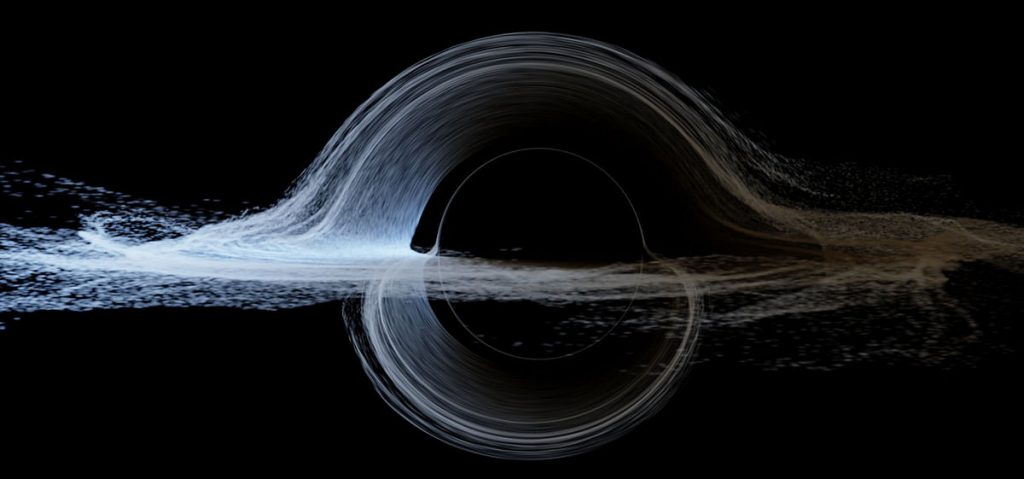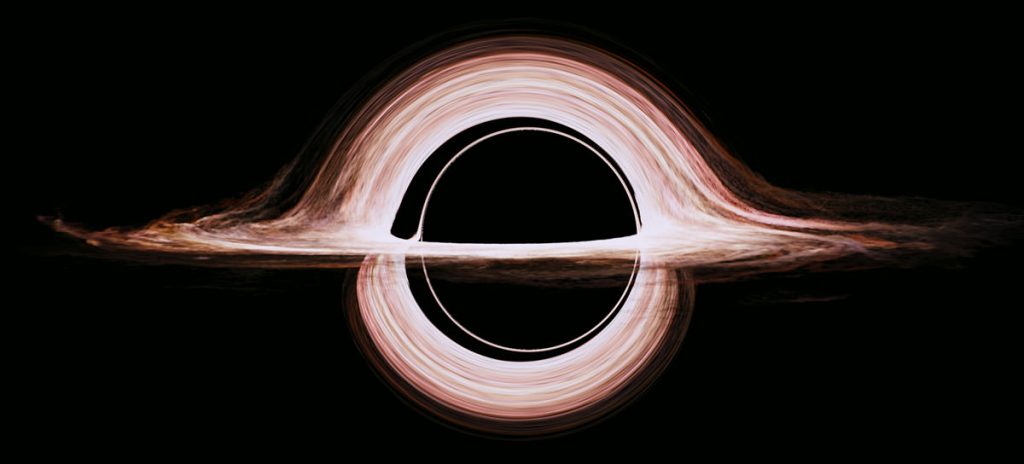When Christopher Nolan released his latest film, Interstellar, in November 2014, the story’s fierce dedication to the science on which it was founded polarised audiences. Some were thrilled to see a Hollywood blockbuster demonstrating reverence for complex ideas and theories the likes of which had been rarely seen in cinema, while others dismissed it as far too strange for a commercial production.
Little did they realise how much stranger it could have actually been.
In Nolan’s homeland of London, England, 30 visual effects artists were working at the Double Negative production facility to create what was to be the most realistic version of a black hole ever to appear in film. Known as Gargantua, design was overseen by esteemed physicist Kip Thorne, who had initially written Interstellar’s treatment. He explained to Science how, through the years, the script became all but unrecognisable, but that “The thing that was preserved was the vision—the thing that was most important to Lynda (Obst, producer) and me—the vision of a movie in which real science, ranging from truth to speculation, is embedded deep into the movie’s fabric from the outset”.
This vision resulted in one of the most intense projects the VFX team ever worked on. When they asked Thorne a question, he often responded by handing over a research paper addressing the very issues they were facing in the design process. From these papers, entirely new software was built to ensure the science was on point.
It may have seemed like overkill, but even with thousands of computers worth of processing power at their disposal, the team knew that rectifying mistakes in their work would chew up time they could not afford to waste. “It’s very easy to fall into the trap of breaking the rules of reality,” senior supervisor Paul Franklin told Wired. “And those rules are actually quite strict.”
One of the rules that would prove to be their biggest obstacle was the theory of gravitational lensing. Traditional computer-generated lighting software assumes that light is travelling straight, but the gravitational force of the black hole is so strong that it actually ‘consumes’ light particles and holds them in a deformed state. To produce this effect, and give the black hole the sense of physical depth Nolan had requested, CG supervisor Eugénie von Tunzelmann created an accretion disk – a ring of matter that encircles some black holes. When she experimented, von Tunzelmann realised that the ring would glow based on how light was being warped in the black hole, rather than external influencers.
For Thorne, it was a ‘eureka!’ moment. The justification for this discovery had been present in his work the entire time, but it took this project – one undertaken for the sake of entertainment, not science – to confirm something humanity may never have been able to prove otherwise.
In the end, the science was muted down a bit. The black hole in Nolan’s film had to be at mass acceleration to contextualise the time distillation that the characters experience, but simulations showed this would cause the light to be ‘pinned’ to one side of the hole, as in the image below.
Nolan thought this wouldn’t appear as aesthetically powerful as he hoped, so the team slowed Gargantua down, resulting in the final product:
Filmgoers and scientists alike were blown away by the black holes presence in the film, the latter even more so when those in charge of the project released an article entitled Gravitational Lensing by Spinning Black Holes in Astrophysics, and in the Movie Interstellar for IOPScience’s Classical and Quantum Gravity.
Their findings have inspired researchers worldwide, including NASA. “Initially when the film came out everyone was really excited that real science was being used to make films,” Double Negative’s chief scientist Oliver James told New Scientist. “As film makers we’re now really excited that our science might get used in NASA projects to do things we’ve never thought of.”


